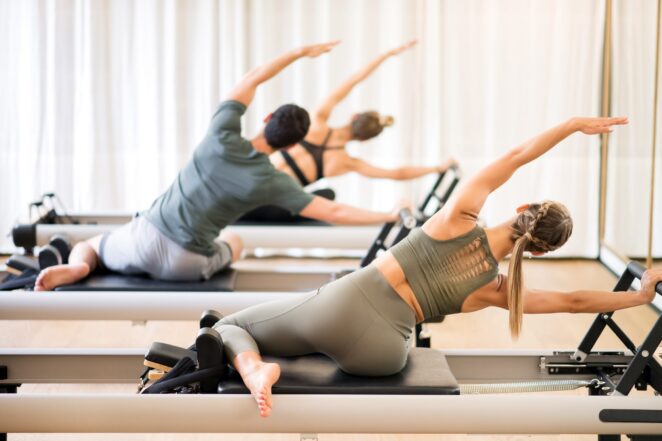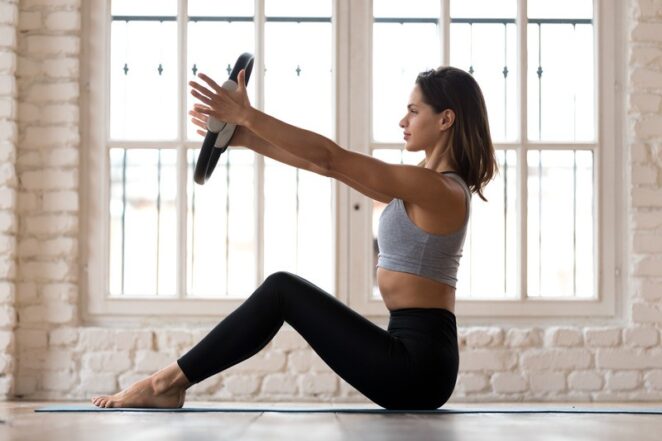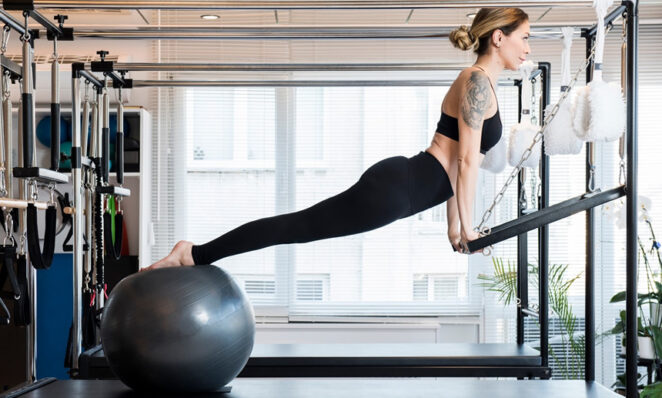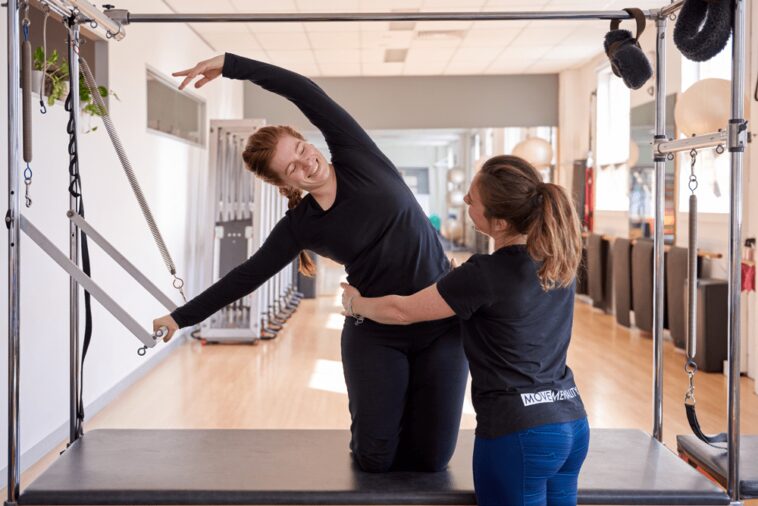Clinical pilates (also known as clinical exercise or clinical rehabilitation) and pilates may sound very similar, but there are actually many differences in methods, purpose, and practice.
These are the differences that determine if clinical or standard is best for what you need.
It can be somewhat confusing to wrap your head around these two concepts that are interrelated, so here is an outline of their differences and the exercise methods which may help you in deciding which Pilates type is better for you.
Joseph Pilates (a professional dancer), developed Pilates in the 1920s. Its primary goal was to aid functional movement and rehabilitation. As an introduction, Pilates is an exercise form that uses the body weight of the person or resistance relating to equipment. It combines breath control and movement to improve flexibility and strength. Over the past ten years, it has turned into a very popular exercise form helping many people to enjoy improved agility and improved strength. And in more recent years, pilates has also turned into a popular way to rehabilitate injuries.
What Are The Key Differences?

Non-Clinical Pilates Involves General Endurance Exercises, Strength, And Core Stability
Pilates is a form of exercise that caters to just about any person, yet it is not focused on specific physical needs or injuries. Non-clinical pilates is focused on the improvement of physical health, as opposed to specific muscle areas. Classes are either reformer or mat-based and involve various props including balls, resistance bands, and weights.
Clinical Pilates Is Patient-Specific
It is generally recommended for patient-specific treatments after surgery or an injury. It is different from Pilates since it will take into account the specific physical needs and injuries of the individual, rather than involving a class of individuals that are completing the same exercises or program. There are several advantages to this which include balance, control, muscle strength, flexibility, posture, and pelvic floor and core strengthening.
One of the factors that are missing from a regular Pilates practice involves clinical assessments that are conducted by certified instructors who are usually physiotherapists. Instructors have expert training and knowledge in exercise pathology and physiology. This is what allows these instructors to customize programs with exercises that are targeted to address and improve the concerns of the patient and to lower the risks of re-injury and aggravating the injury. The levels of personalization that clinical pilates provides aren’t available in regular pilates classes. Check upwellhealth.com.au for more information.
Which One Is Right For You?

There are no wrong or right answers when it comes to choosing between clinical pilates and pilates. Both offer excellent benefits and the type that is best for you will depend on your focus and goals.
If you are focused on your overall wellbeing and health, then considering local pilates classes is probably a better option.
However, if you have had a recent surgery or you have suffered an injury, or any specific area that requires addressing, clinical pilates might be a better route to try. A 1:1 clinical assessment can assist you in identifying the source of your issues, and the exercises that you do will be combined with physiotherapy making sure you receive the training that you need.
Difference Between Clinical Pilates and Pilates?
Clinical pilates is a form of health exercise that is used to treat medical conditions and improve overall health. It is based on the principles of Pilates, but it includes modifications and adjustments that are specific approaches to the needs of each individual. It is typically prescribed by a doctor or physical therapist, and it is often used to treat back pain, neck pain, arthritis, and joint injuries.
Clinical Pilates is usually performed in a group setting, but it can also be done individually.
Joseph Pilates developed Pilates as a form of exercise that was by in the early 20th century. It is based on six basic principles: control, concentration, breath, centre, flow, and precision. It is typically done on a mat, but it can also be done on a reformer (a piece of equipment that use springs and pulleys to resist).It is often used to improve flexibility, strength, and posture.
It is typically done in a group setting, but it can also be done individually. Clinical Pilates is usually performed in a one-on-one setting with a Clinical Pilates Instructor. Clinical Pilates Instructors are specially trained to assess each client’s needs and create a customized program based on the client’s goals. It is often used to help clients with specific injuries or conditions.
If you’re considering a career in this field, pursuing Pilates instructor training can be an essential step. Programs like those offered by Breathe Education provide comprehensive training to equip you with the skills necessary to instruct both clinical and traditional Pilates effectively.

So, what is the difference between clinical pilates and pilates? Clinical Pilates is a more customized and specific form of Pilates that is often used to help clients with injuries or conditions. Pilates is the more generalized form of exercise, and then Pilates may be a better option for you. If you have an injury or related health condition that you would like to specifically target, Clinical Pilates may be a better option. Clinical pilates may also be a good option if you are looking for a more customized and specific workout routine.
Interested in trying this? Consult with your doctor or physical therapist to see if it is right for you. They are both safe and effective. However, clinical pilates may not be appropriate for everyone. If you have any concerns, please consult with your doctor or physical therapist. They are both excellent forms of exercise that can help you reach your fitness goals. Clinical pilates and pilates are two great options for anyone looking to improve their overall fitness. It is a great choice for those who want a more personalized and specific workout routine. Pilates is an excellent choice for those who are looking for a challenging and fun workout. Pilates the one that is right for you and your needs!
Clinical Pilates or Pilates?
The choice is yours! Clinical pilates and pilates are two great options for anyone looking to improve their overall fitness. It is a great choice for those who want a more personalized and specific workout routine while Pilates is a great choice for those who are looking for a challenging and fun workout. The choice is yours!



